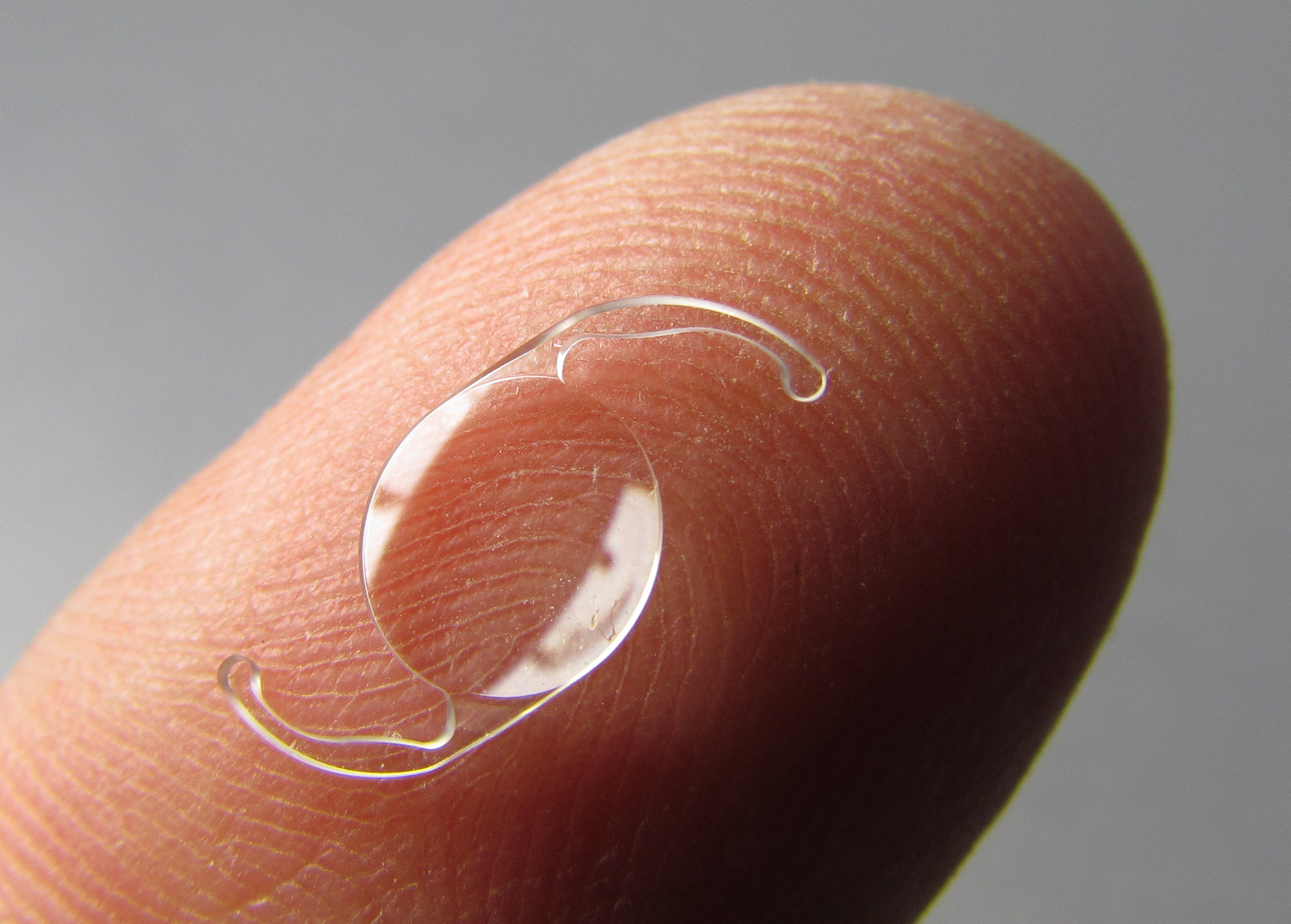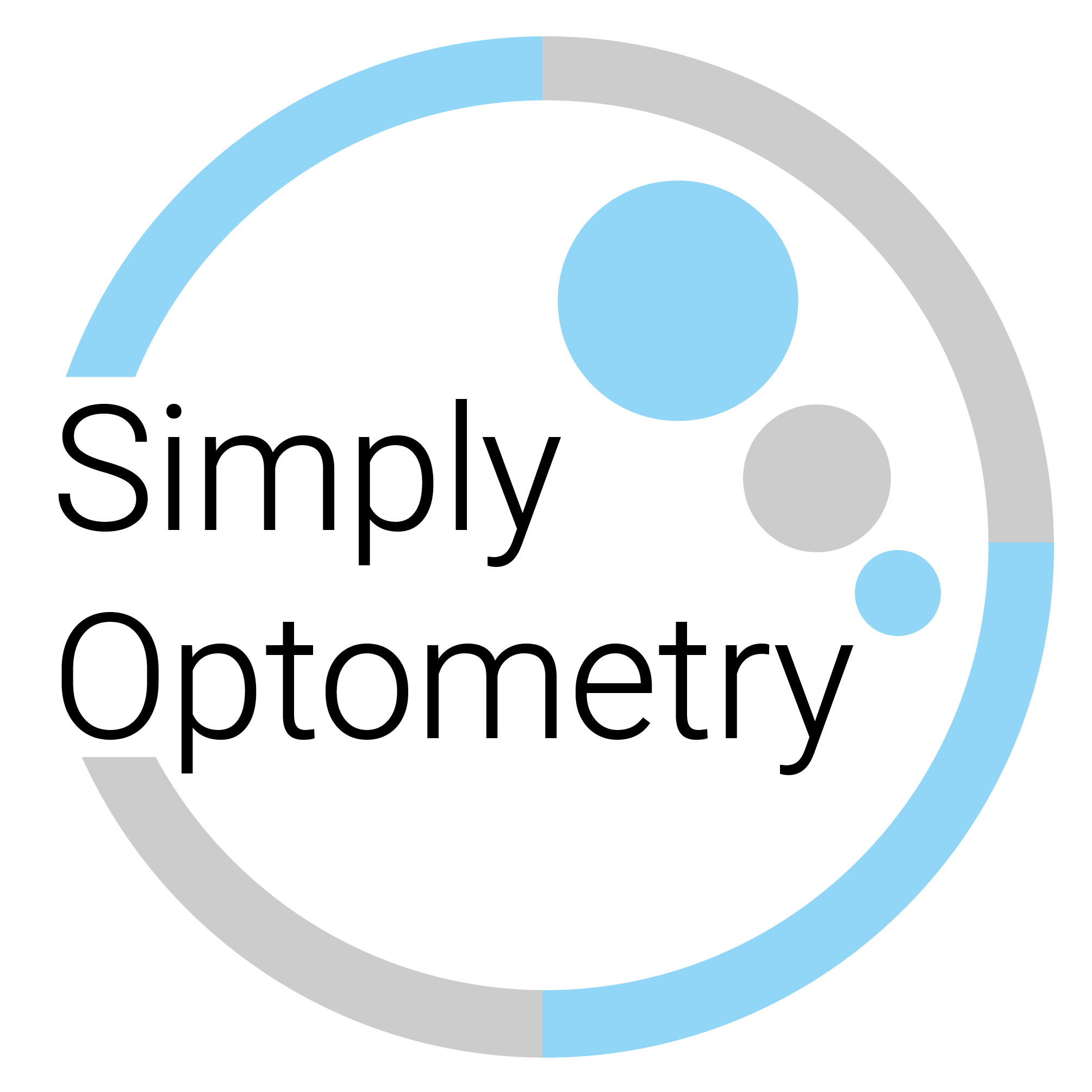WHAT ARE CATARACTS?
A cataract is any form of opacity that develops in the natural crystalline lens of the eye. They most commonly develop in both eyes, though it is typical for them to progress at different rates. The most common cause of cataracts is aging, however there are many other ways to develop them such as trauma, steroid use, smoking, and ultraviolet light exposure. Also systemic conditions such as diabetes and nutritional deficiency have been shown to increase the risk of developing cataracts.
The appearances of cataracts vary widely. Sometimes they appear to be a yellow-brown coloring change within the lens, and others have a hazy white appearance. Depending on the location of the cataract within the lens, it can affect your vision differently. The best way to determine the type of cataracts that are developing and the prognosis for vision is to have a dilated eye exam with an eye care specialist, such as Simply Optometry.

CATARACT SYMPTOMS
The earliest symptoms of cataracts are often glare and difficulty seeing at night. Some patients will also describe their vision as cloudy or foggy as opposed to blurry. Loss in contrast or color recognition are also common. Cataracts can also change a patient's prescription, so developing blurry vision with glasses is a common symptom as well. Ultimately, cataracts will decrease overall vision until it is difficult to complete activities of daily life, even with the best possible correction with glasses or contact lenses.

CATARACT PREVENTION AND CARE
Though often the development of cataracts is due to natural causes beyond our control, we can help recommend ways to slow down their formation. The best way to slow cataract development is to protect the lens from ultraviolet light exposure. This is important at a young age, as most of the damage we do to our eyes occurs while we are still in our teens. At Simply Optometry we can recommend various lens options to best protect your eyes and prevent cataracts from affecting your vision at a young age. There has also been substantial research in recent times regarding the importance of antioxidants and nutrition in preventing development of cataracts. These nutritional recommendations are especially important for individuals with risk factors predisposing them to developing cataracts such as those with diabetes or a family history of cataracts.
Inevitably, we will have cataracts that we cannot prevent, and at that point we can help to optimize our patient's vision so that activities of daily life are easier to accomplish.

CATARACT TREATMENT
The only known cure for cataracts at this time is surgery with an ophthalmologist. At Simply Optometry, we do not perform this surgery, but we can handle your pre- and post-operative care while we refer you to an excellent ophthalmologist in the area. Cataract surgery is the most commonly done surgical procedure performed in the United States, and if done with a great surgeon, there are very few complications that occur.
The surgical procedure for cataracts involves the removal of the natural lens that has developed the cataract and then replacing it with a clear plastic lens in its place. This new lens is not noticeable by the patient and will correct the patient's vision. It is common for vision to be very clear even without additional correction after the surgery, but reading glasses will be necessary after the procedure if a multifocal lens option is not chosen. Any residual prescription after the surgery can be corrected with glasses or contact lenses.
Surgery is most commonly recommended when the best corrected vision in the affected eye is 20/40 or worse, but it is also important to consider how the cataracts are affecting the patient's daily activities. Generally, it is better to have the procedure earlier rather than later due to the fact that advanced cataracts are more difficult to remove than early or moderate cataracts. The procedure is generally done one eye at a time, and a full recovery time is typically about one month, though most patients will regain functional vision within one to two weeks.


HOW DO I GET EVALUATED FOR CATARACTS?
At Simply Optometry we screen every patient for cataracts, and we will recommend further evaluation as we see necessary. Typically a dilated eye examination is sufficient to determine the extent of a cataract, though further testing may be necessary to determine the amount of vision loss as well as the prognosis of vision after cataract surgery. Not every patient can have cataract surgery, so it is also important to assess whether a patient is a good candidate before recommending surgery.
Make your appointment today so we can help evaluate the condition of your eyes!

